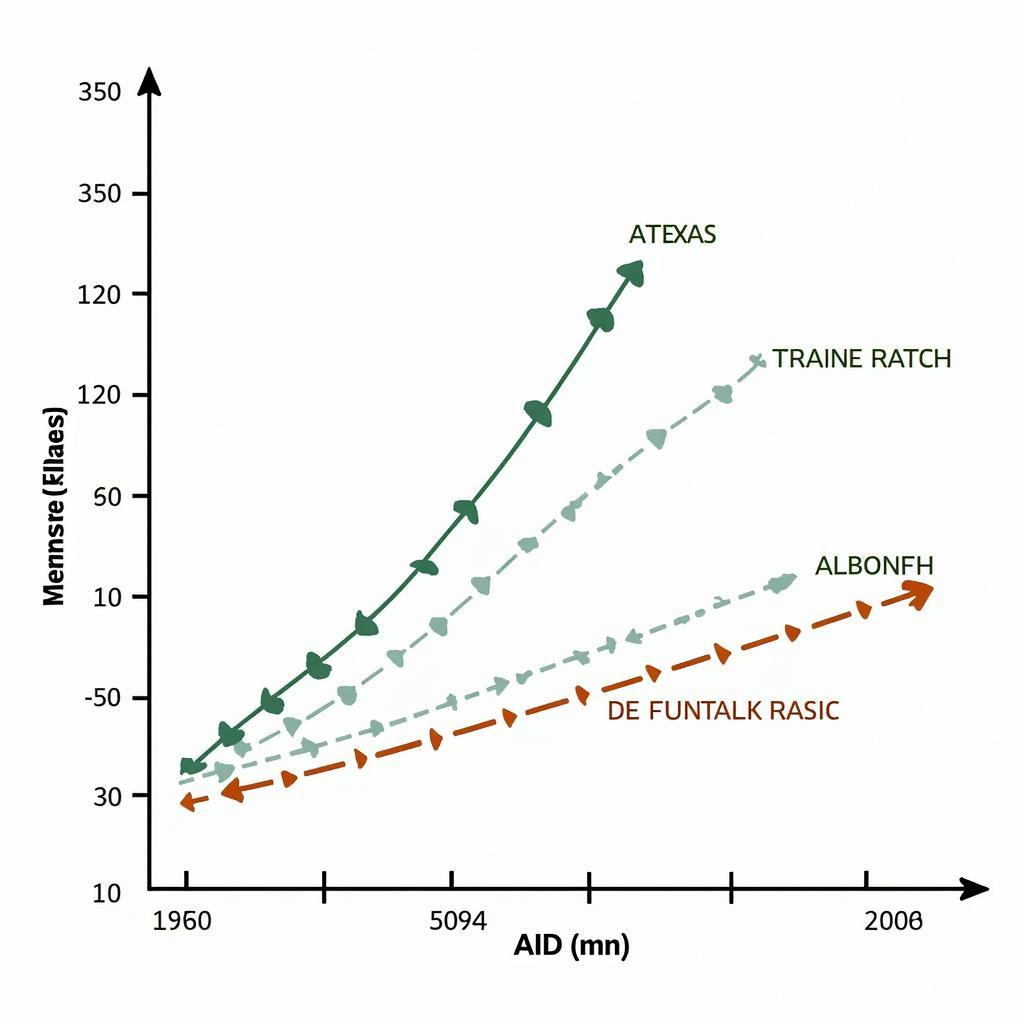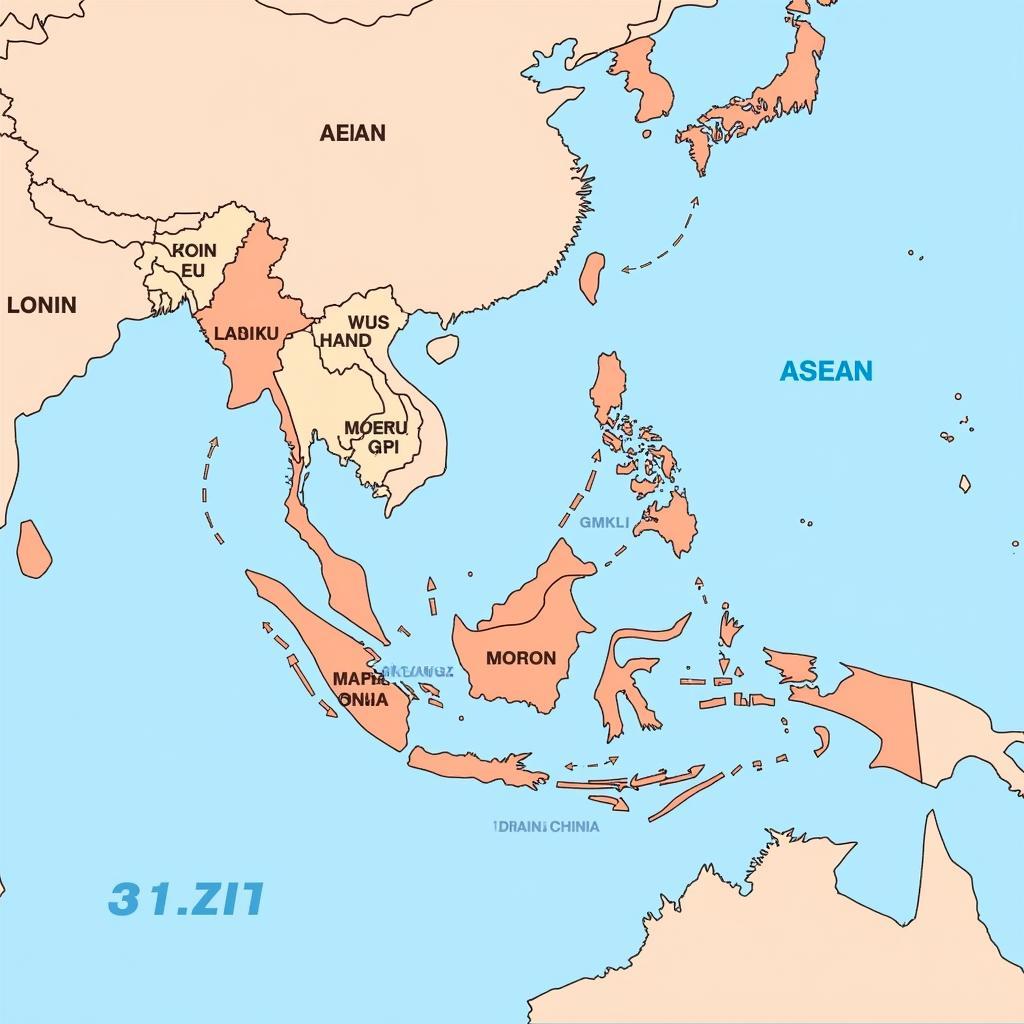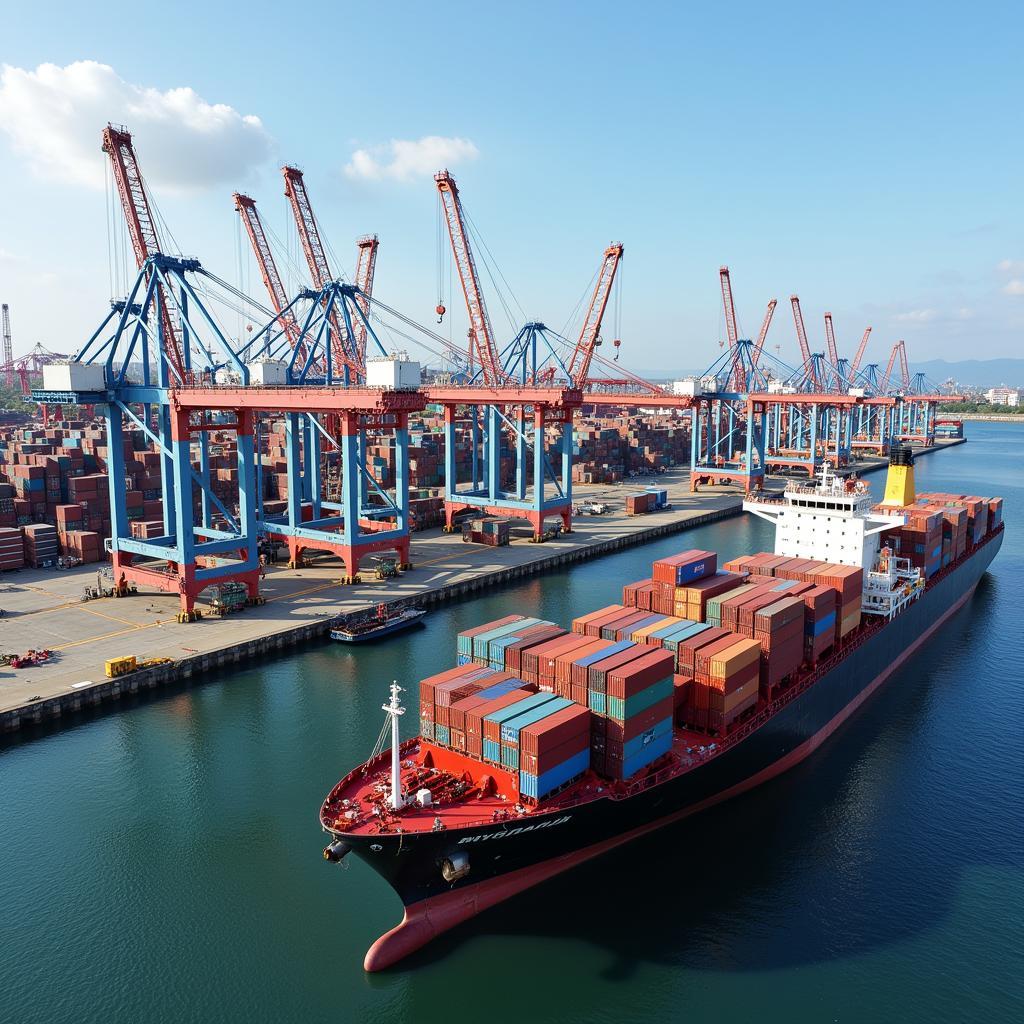The term “Asean Brexit” has emerged as a captivating, albeit somewhat misleading, analogy to describe various scenarios of disengagement or reduced integration within the Association of Southeast Asian Nations (ASEAN). This article delves into the complexities of this phenomenon, exploring its potential causes, consequences, and implications for the future of regional cooperation.
ASEAN, a vibrant tapestry of diverse cultures, economies, and political systems, has long championed regional integration as a pathway to shared prosperity and stability. However, the notion of an “ASEAN Brexit” highlights the inherent challenges in maintaining unity and cohesion within such a diverse bloc.
What Drives “ASEAN Brexit” Sentiments?
Several factors contribute to the emergence of “ASEAN Brexit” sentiments. These include differing national interests, varying levels of economic development, and the rise of nationalism. Additionally, external pressures, such as geopolitical rivalries and trade disputes, can exacerbate internal divisions. The complex interplay of these factors creates a dynamic and often unpredictable environment for regional cooperation.
Economic Disparities and Integration Challenges
The economic disparities within ASEAN create a breeding ground for discontent. While some member states have experienced rapid economic growth, others lag behind, leading to concerns about unequal distribution of benefits from integration. This can fuel protectionist sentiments and resistance to further economic liberalization.
Political and Security Concerns
Political and security concerns also play a significant role. Territorial disputes, maritime security challenges, and the rise of non-traditional security threats, such as cybercrime and transnational terrorism, can strain relations between member states and hinder collective action.
 ASEAN Brexit: Economic Disparities and Integration Challenges
ASEAN Brexit: Economic Disparities and Integration Challenges
Furthermore, differing political systems and ideologies can create friction. While some ASEAN members embrace democratic values, others maintain authoritarian regimes. These differences can complicate efforts to achieve consensus on regional issues and hinder progress towards deeper integration.
External Influences and Geopolitical Dynamics
External influences, particularly from major powers vying for influence in the region, can also contribute to “ASEAN Brexit” tendencies. Competition for resources, strategic partnerships, and economic dominance can create a complex web of alliances and rivalries, impacting ASEAN’s internal dynamics and its ability to maintain a unified stance on regional issues.
Is “ASEAN Brexit” a Real Threat?
While the term “ASEAN Brexit” is evocative, it is important to note that ASEAN is not a supranational entity like the European Union. Member states retain their sovereignty and have the right to pursue their national interests. However, the erosion of trust and cooperation within ASEAN could have serious consequences. It could weaken the bloc’s ability to address shared challenges, diminish its influence on the global stage, and potentially lead to increased instability in the region.
 ASEAN Brexit: Geopolitical Influences and Regional Dynamics
ASEAN Brexit: Geopolitical Influences and Regional Dynamics
Mitigating the Risks of Disengagement
To mitigate the risks of disengagement, ASEAN needs to strengthen its mechanisms for conflict resolution, enhance economic cooperation, and promote greater people-to-people connectivity. Building trust and fostering a sense of shared identity are crucial for maintaining ASEAN’s relevance and effectiveness in the 21st century.
The Future of ASEAN Integration
The future of ASEAN integration hinges on the ability of member states to find common ground and work together to address the challenges facing the region. While the “ASEAN Brexit” narrative highlights the potential for fragmentation, it also underscores the importance of continued dialogue, cooperation, and commitment to regionalism.
ASEAN UK motor retail profitability statistics offer valuable insights into the broader economic context of regional trade and investment flows. Similarly, understanding the role of entities like ASE UTRA UK and ASE Holdings UK can shed light on the interconnectedness of businesses and investments across borders. These factors can influence the economic dynamics within ASEAN and contribute to the complexities of regional integration.
“The key to ASEAN’s success lies in its ability to embrace its diversity while fostering a sense of shared purpose,” says Dr. Anya Sharma, a prominent Southeast Asian political analyst. “Navigating the complexities of regional integration requires a delicate balance between national interests and collective goals.”
Professor Michael Tan, an expert on ASEAN economics, adds: “Addressing the economic disparities within ASEAN is crucial for ensuring that all member states benefit from integration and feel a sense of ownership in the regional project.”
In conclusion, the “ASEAN Brexit” phenomenon serves as a reminder of the ongoing challenges and opportunities facing ASEAN. By addressing the root causes of discontent and strengthening the foundations of regional cooperation, ASEAN can ensure its continued relevance and effectiveness in promoting peace, prosperity, and stability in Southeast Asia.
FAQs
-
What does “ASEAN Brexit” mean?
It refers to the potential for disengagement or reduced integration within ASEAN, often used as an analogy to the UK’s departure from the European Union. -
What are the main causes of “ASEAN Brexit” sentiments?
Differing national interests, economic disparities, political and security concerns, and external influences are key drivers. -
Is “ASEAN Brexit” a likely scenario?
While a complete disintegration is unlikely, the erosion of trust and cooperation could have negative consequences for the region. -
How can ASEAN mitigate the risks of disengagement?
Strengthening conflict resolution mechanisms, enhancing economic cooperation, and promoting people-to-people connectivity are essential. -
What is the importance of understanding ASEAN UK Motor Retail Profitability Statistics in this context? These statistics provide valuable insights into the economic interconnectedness between ASEAN and the UK, highlighting the importance of regional trade and investment flows.
-
What role do entities like ASE UTRA UK and ASE Holdings UK play in this scenario? Their presence highlights the complexities of cross-border business and investment activities, which can influence the economic dynamics within ASEAN.
-
What is the future of ASEAN integration? It depends on member states’ ability to find common ground and work together to overcome challenges and build a stronger, more unified bloc.
For support, contact us at Phone: 0369020373, Email: [email protected], or visit our office at Ngoc Lien Village, Hiep Hoa, Bac Giang, Vietnam. We have a 24/7 customer support team.


